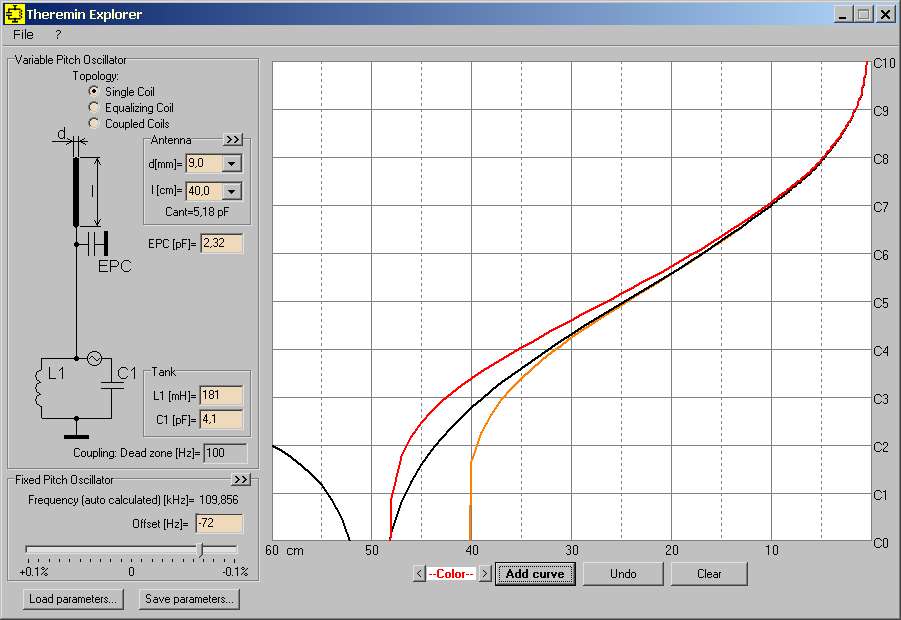New version (v1.22) of Theremin Explorer is avalible now. Download page is here.
The new version incorporates the ‘frequency pulling’ effect. The magnitude of this effect is controlled by the ‘Coupling: Dead zone’ parameter. When saving parameters to a file, this corresponds to the line ‘Fcoupling=’.
The simulation assumes that there is no hysteresis effect (the lock range is equal to the hold range, and the approach to the synchronization point is ‘soft’). For basics refer to topic.
In reality, the hold range is always larger than the lock range, and synchronization can occur slightly earlier – a ‘hard jump.’ This is due to the oscillator’s increased sensitivity to noise and interference in the immediate vicinity of the synchronization region.



